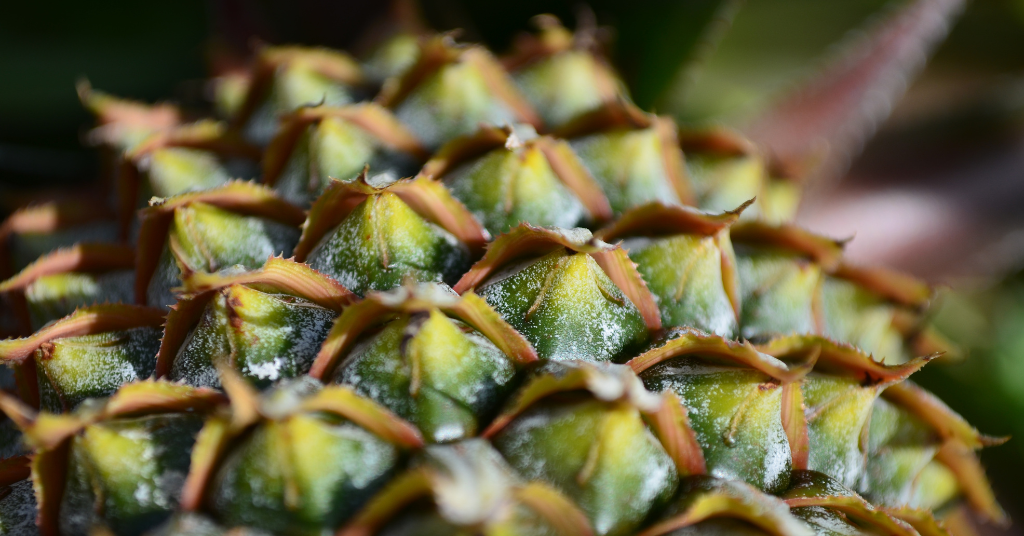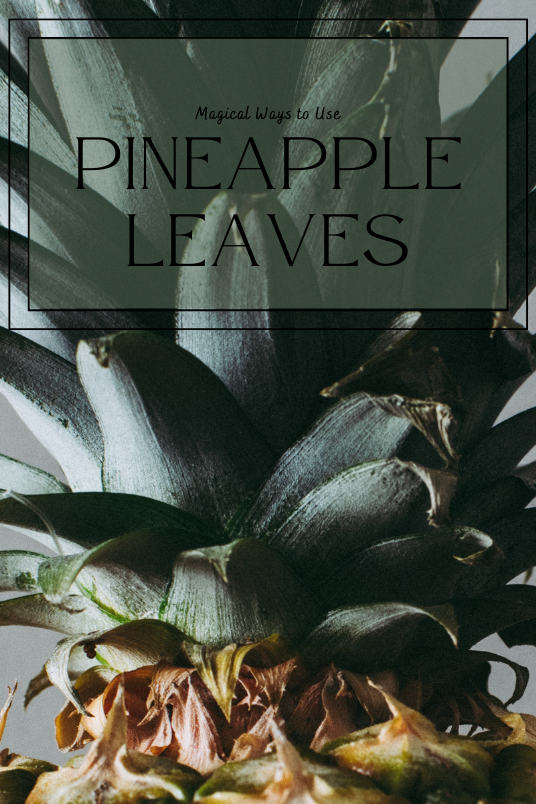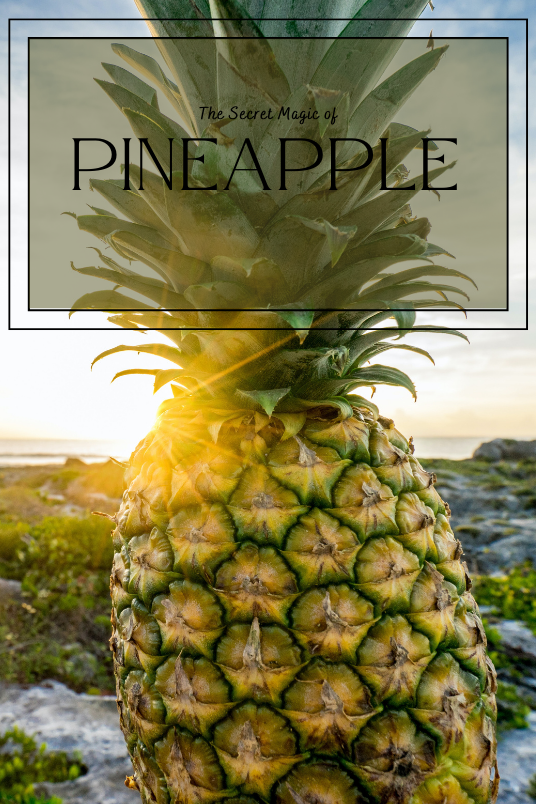Pineapple Peel Tea
Instead of wasting that pineapple peel, why not turn it into great-tasting and beneficial tea? A popular drink in Jamaica, pineapple peel tea gives you the opportunity to be resourceful with your pineapple peels. Not to mention it’s incredibly healthy as it contains vitamins and minerals that promote healthy digestive health, soothe arthritis pain, and fight cancer.
Pineapple Peel Tea is incredibly easy to make. For starters, using organic pineapple is ideal, as it lessens the likelihood of pesticides and also provides for a more nutrient-rich brew. Moreover, before you cut the pineapple skin off of your pineapple, make sure to scrub it really well using a veggie wash if available, or soak it in vinegar for half an hour.
Both pineapple peel and core can be included in your brew. It’s quite common to include a little ginger to give the pineapple tea some pop, as well as sugar or maple syrup if you prefer. You can also add turmeric to send its healing power into overdrive, or even orange peels, cloves, and nutmeg to give it a mulled twist.

Adding cinnamon as well can give your pineapple tea an autumnal vibe. If you’re feeling especially adventurous, you can even add a little rum. Additionally, Pineapple Peel Tea tastes great as a hot drink during the colder months, or cold to refresh and stay cool during the summer.
Pineapple Peel Tea contains bromelain, a metabolite that helps to promote a healthy digestive system, prevent blood clots and help fight arthritis pain, among many other benefits. So as you enjoy your wonderful glass of pineapple peel tea, remember that you are doing your body a big favor as well.
Pineapple Vinegar
Pineapple vinegar is an excellent way to save your pineapple skins from the garbage and compost. It’s incredibly easy to make, with most of the ingredients and components being items you can usually find around the home and pantry. Moreover, pineapple vinegar provides a great way to improve your digestion and boost your immune system.
To start you will want to make sure that you clean your pineapple thoroughly with a vegetable brush, minimizing the chance that your vinegar is contaminated. Likewise, the jar you are using will need to be sterilized as well. There are many methods to do this, which can include microwaving the jar for a brief period of time, boiling it, or using vinegar.

The next step is dissolving some water and sugar in the glass jar, then adding your pineapple skins. When you’re filling it with the pineapple skins, make sure to leave about a centimeter of space at the top of the jar. Once this is complete, cover the jar with breathable material, like cheesecloth, a paper towel, or another otherwise light fabric, and secure it with a rubber band.
Your pineapple vinegar will need about 2-3 weeks in a cool, dark place like your cupboard or pantry before it is matured enough to use. During this time, you will want to open and stir it daily to help aerate the mixture. Once time enough has arrived, strain the pineapple vinegar of its scraps using a cheesecloth, then place the pineapple vinegar into sterile bottles and seal them.
At this point, you are more than welcome to make use of your homemade pineapple vinegar, but allowing it to sit for another week or so will deepen the flavor. Furthermore, this pineapple vinegar can be used in many of the ways you already use vinegar.
Making Zoborodo (Zobo Drink) with Pineapple Peels
Pineapple peels are oftentimes combined with dried hibiscus flowers to make a Nigerian drink called Zoborodo or Zobo for short. In this deep purple drink, it’s common to include ingredients such as garlic, ginger, and even cloves, making it a powerful healthy beverage. Moreover, it seems that the drink is quite effective in lowering high blood pressure.
Hibiscus flowers are not only incredibly nutritious, but their sweet and tangy flavor makes for an excellent beverage, and the natural sweetness of pineapple skins only compliments that. In fact, many parts of the world are quite fond of using hibiscus flowers in beverages. For instance, in Panama dried hibiscus calyces are used to make saril, with additional ingredients that very much resemble zobo.

Preparing Zoborodo
For our purposes, we’re going to focus on the Nigerian Zobo drink since it provides another wonderful way for us to use our pineapple skins. Making Zobo is surprisingly easy as it’s basically just making tea, but adding a few choice ingredients. Garlic, ginger, and cloves appear to be relatively consistent additions, but it’s okay to get creative and add lemongrass and even ancho chiles.
Be sure to wash your pineapple’s skin thoroughly before you use it, to ensure that your drink isn’t contaminated by dirt and germs. The hibiscus flowers as well — or “zobo leaves” — will also need to be rinsed. Don’t be alarmed when you notice the hibiscus flowers “bleeding” their color as you rinse as there will be plenty left for your zobo brew.

Add the zobo leaves to a deep pot, and on top of those add your pineapple peels. Next, add enough water to cover the contents of the pot plus a little more. Boil for about 5 minutes, then introduce some finely chopped ginger and garlic and boil for 30 mins more to allow the contents to become tender. Once time has arrived, turn off the heat and allow your zobo to cool completely.
You’ll want to do due diligence in draining out the food particles to produce the best juice, so straining it multiple times through a cheesecloth, sieve, and even finer grain cloth like chiffon as you progress is advised. Afterwhich, if you want to add extra ingredients, such as lemon or orange, now is the time to do so. Bottle and refrigerate your Zobodoro to store it and enjoy!
Pineapple Peels and Tepache!
Tepache is a quick and easy way to take your pineapple peels and turn them into something fun, flirty, and delicious. It is a recipe that dates back from Pre-Colombian Mexico and is made by fermenting pineapple peels for several days. Tepache is typically sweetened with unrefined cane sugar called piloncillo or brown sugar.
While you can easily order Tepache in many juice bars or traditional Mexican restaurants — especially in the Southwest — equally as simple is the ability to make Tepache right from your home. It requires minimal components: a clean glass jar, pineapple peels, water, and sugar.
Although Tepache is created by fermenting pineapples, its rather light on the alcohol content, but you can add a little beer to give it more punch. Likewise, the recipe is not harmed at all by adding a sprinkle of cinnamon, which is common.

Preparing the Tepache
To start, you’ll want to wash your pineapple thoroughly and mindfully with a vegetable brush to remove germs and dirt. Next, cut the peel off the pineapple, being generous with the amount of pineapple flesh you leave on the peel. About 1-inch thick peels should do the trick.
Now it’s time to dissolve the sugar in your glass jar, using a little bit of water. Add the pineapple skins, then introduce enough water to completely submerge the pineapple skins. You’ll want to push the pineapple skins well into the bottom of the jar and even weigh them down with something like a wooden spoon or a fermentation weight. This is because complete immersion is necessary to prevent mold from ruining your Tepache.

You’re coming to the last step, which is to cover your jar of Tepache with a breathable cloth, such as layers of paper towel or a clean dish cloth, and put it away. Store your Tepache at room temperature in a dark space for about 1-3 days.
You’ll know the brew is done and the Tepache is sufficiently fermented when you see bubbles on the top. Be sure to taste it throughout the process to make sure the flavor is to your liking, keeping in mind that the longer it ferments, the less sweet it will be. Once you’re sure you have an enjoyable result, store your Tepache in the refrigerator to stop the fermentation.
…Or, if you want to continue on to what is called the “second fermentation” — an optional step, but recommended if you want a fizzier brew — check out Live Eat Learn for complete directions as well as more tips to make your best Tepache.







